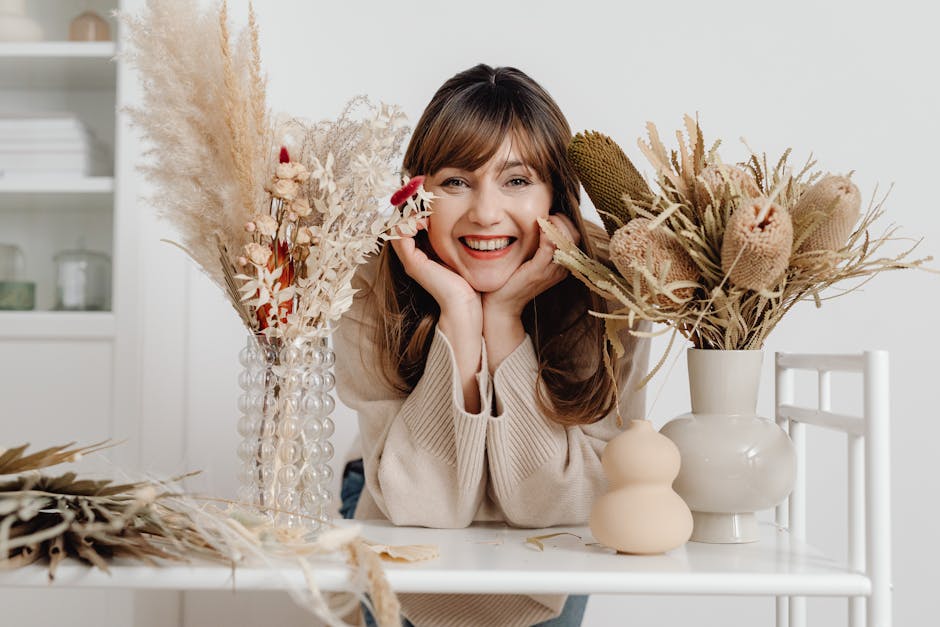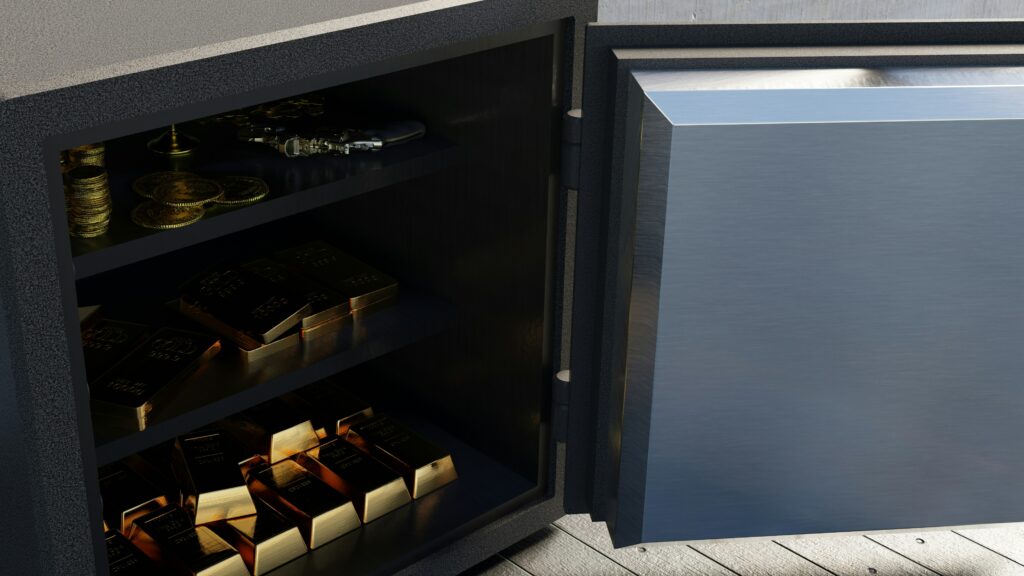Why Nature Belongs Indoors
Biophilic design isn’t just a trend—it’s backed by real science. At its core, it’s about tapping into something ancient: our hardwired connection to the natural world. Studies have shown that humans respond positively to elements like greenery, sunlight, flowing water, and organic textures. Biophilic spaces reduce cortisol, improve attention spans, and even speed up recovery times in healthcare settings.
Natural elements offer more than just visual appeal. Being near plants or natural light cues the brain to chill out. It can improve mood, lower anxiety, and support better sleep patterns. Wood grain patterns, stone surfaces, and the sound of water mimic environments our nervous systems interpret as safe. That creates an undercurrent of calm in your space.
When you bring in natural textures or nature-like forms, you’re not just decorating—you’re adjusting the psychology of your home. A few simple changes can lower mental clutter and make daily routines feel less like a grind. That matters, especially in a world that seems designed to keep us overstimulated. Nature-inspired design isn’t about escaping reality. It’s about sharpening your ability to handle it.
Organic Materials That Make a Difference
Natural materials don’t have to scream for attention to make an impact. In fact, the quieter they are, the better they fit into calm, enduring spaces. Start with wood—that old standby that never went out of style. Reclaimed or raw wood brings texture, character, and a sense of grounding, especially when the knots, cracks, and imperfections are left as-is. Whether it’s a rough-hewn coffee table or floating shelf, opt for sustainably sourced pieces when you can.
Stone and clay are about weight—not just physically, but emotionally. These elements lend a sense of permanence and calm. A matte clay vase, a raw-edge stone bowl, or even simple clay tiles can make a space feel like it’s been assembled slowly and with care. The key is letting the natural finish show off instead of coating it up with gloss.
And then we get to the fibers. Jute, linen, rattan—they’re the unsung heroes of peaceful interiors. A rattan chair doesn’t crowd a corner; it frames it. Linen drapes let light in without being fussy. A jute rug grounds the room and gives your feet something real to land on. These materials aren’t here to perform. They’re here to support your space quietly.
Use them sparingly or layer them deeply—what matters is intention and texture.
Earth-Inspired Color Palettes
Color has weight. It shifts how a space feels—fast. Nature gets this right, and bringing those same tones indoors can create balance without shouting for attention. Earth colors like mossy green, stone gray, clay brown, or sand beige have a grounding effect. They calm, but don’t bore. They do quiet work.
Greens bring a sense of vitality and growth. Think sage, olive, or eucalyptus—tones you’d find on a forest trail. Browns and soft grays offer stability. Layer them in with throws, rugs, or wood accents. Neutrals like cream or mushroom act as bridges, toning down stronger contrasts or bright pieces.
Don’t be afraid to add a bit of contrast—just keep it subdued. Mix a deep forest green with pale linen. Add a dark wood side table in a light, neutral room. The trick is to use one or two deeper tones as anchors, and let the lighter shades carry the mood. It’s about tone-on-tone balance, not loud pops of color. This way, the space feels warm, intentional, and—most importantly—livable.
Plants: The Obvious, Yet Essential
Bringing plants indoors isn’t just a trend—it’s one of the most effective ways to introduce nature’s calming influence into your home. Live greenery softens hard surfaces, purifies air, and creates a lived-in, organic atmosphere.
Best Low-Maintenance Indoor Plants for Beginners
Not all plants require a green thumb. The following options thrive with minimal effort:
– Snake Plant (Sansevieria): Tolerates low light and infrequent watering
– Pothos: Grows quickly and adapts well to different conditions
– ZZ Plant: A hardy choice that can go weeks without attention
– Peace Lily: Offers air purification and occasional white blooms
– Spider Plant: Great in hanging containers; resilient and easy to propagate
Styling Tips: Grouping, Pot Choices, and Light
Good styling is about more than just placing a plant on a table. To enhance tranquility while keeping your space cohesive:
– Group plants in odd numbers for a natural, less structured look
– Vary heights and leaf shapes to add dimension and movement
– Choose pots in earthy tones or organic materials like terracotta, stone, or matte ceramic
– Observe available natural light and position plants accordingly—some prefer indirect light, others thrive in bright sun
When Faux Works, and When It Doesn’t
Not every space—or lifestyle—can support real plants. In such cases, faux greenery can offer the look without the labor, but it’s important to use them thoughtfully:
– Use faux plants in low-light areas where real ones would struggle
– Opt for high-quality versions with realistic textures and natural coloring
– Limit their use in large groupings—a few well-placed faux pieces are more convincing than many clustered together
– Avoid perfect symmetry when styling faux plants to mimic nature’s unpredictable growth
Sometimes, low-maintenance means no maintenance—and that’s okay. Whether real or artificial, plants remain core to a grounded, nature-inspired interior.
Water & Light as Design Tools
Sound and lighting don’t get the credit they deserve in most home designs. But when you tune them right, they deliver calm in ways that furniture and paint can’t. A subtle fountain—maybe on a shelf or tucked into a corner—does more than decorate. It softens sound, adds rhythm. It tells your brain to unclench.
Same goes for light. Let in the sun, but keep it tempered. Sheer curtains help, but so do smart placements—angled mirrors, bright walls, strategic shadow. Overexposure turns spaces harsh. Aim for balance: warmth over glare.
Then there’s the twilight zone—literally. Soft lighting that mimics sunrise or dusk colors the whole space differently. Think low, amber-hued table lamps or wall sconces dimmed just enough. These aren’t mood tricks. They’re physical cues to slow down. Minimal effort, maximum payoff.
Found Objects & Eco Upcycling
One person’s Sunday stroll is another’s design hunt. Driftwood, smoothed by time and water, becomes a minimalist sculpture. Stones with interesting shape or texture can ground a coffee table centerpiece. Twisted branches leaned in the corner or mounted on a wall add quiet drama. The point is: natural walks double as sourcing trips if you’re paying attention.
There’s beauty in the flawed. A cracked stone, a bleached stick, a knot-riddled plank—these aren’t junk. They’re texture, story, and provenance. Bringing these into your home is less about budgeting and more about perspective. You’re not decorating, you’re curating.
Preserve what feels right. A simple sanding, a coat of sealant, or just leaving it raw can be enough. These pieces hold a kind of stillness—it’s less about perfect form and more about being connected to something real.
For more ideas on mindful reuse, check out Repurposing Everyday Items for Upscale Decor.
Texture Layering Done Right
Nature doesn’t match—so your space doesn’t have to either. The trick to layering textures is to stay varied, but intentional. Start by combining the rough with the soft: a chunky knit wool throw draped over a raw wood bench creates contrast that feels both grounded and cozy. Next, add in something with form and structure, like a woven basket or a clay pot. These pieces bring tactile balance without making things feel busy.
Stick to organic shapes and finishes. Think nubby linen cushions paired with smooth river stones or a rattan ottoman next to a matte ceramic lamp. Avoid anything too polished or too identical—it’ll clash with the calm you’re trying to build. Use each texture to carve out subtle zones. A quiet reading corner? Try a sheepskin rug, faded wood stool, low floor light. Suddenly you’ve got a mini retreat without making any structural changes.
It’s less about matching, more about echoing nature’s rhythm—unforced, unfussy, but deeply felt.
Keeping It Calm, Not Cluttered
Nature-inspired design works best when there’s breathing room. Just like a forest floor or a mountain trail, the goal isn’t to fill every inch—it’s to create flow. Start by editing. Walk through your space with a critical eye and ask: what actually adds peace? If something feels like visual noise, it probably is. A few well-placed branches in a vase or a single stone bowl on a shelf can do more than a dozen tiny trinkets.
Negative space matters. In nature, the quiet gaps between trees or rocks help define the beauty of each element. Apply that same logic in your room. Leave space around objects. Don’t be afraid of empty corners or cleared surfaces. That ‘nothingness’ is what lets the natural pieces shine.
As seasons shift, so should your setup. Rotate in dried grasses for fall, pine or eucalyptus for winter, and fresh greens in spring. The key is not to accumulate, but to swap mindfully. Keep a small stash of seasonal decor stored neatly, and let your main pieces work year-round. Simplicity over novelty, always.
Final Thoughts: Let Your Home Breathe
Creating a nature-inspired home doesn’t mean transforming your space overnight or turning it into a design project. It starts with a single change—a warm wood bowl here, a soft linen throw there. Let it grow from there. Choose pieces that feel honest and personal, and then give them room to breathe. The best sanctuaries are built slowly.
When adding visual elements, lean on natural motifs—stones, leaves, weathered lines—instead of rigid patterns. Nature isn’t about control; it’s about rhythm. Echo that in your space by using similar forms or textures in different ways rather than duplicating the same print or design.
And don’t freeze your home in place. Let it evolve. Rotate objects seasonally. Shift layouts as your needs change. Just like a forest or desert landscape, your space should reflect the passage of time and respond to how you live inside it.
Simple. Calm. Unforced. That’s where the magic happens.




